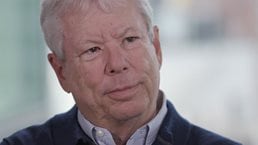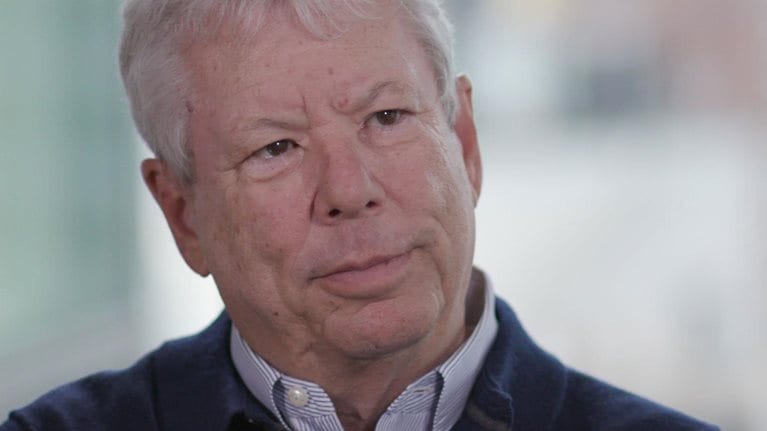Studies show that companies that actively reallocate resources outperform those that don’t.1 In many companies, however, a range of obstacles—cognitive biases and inconsistent decision-making processes, for example—keep planning teams and senior executives from being as “active” as they could be. As a result, when executives are faced with opportunities outside of the traditional budgeting cycle, they can get caught flat-footed.2
Stay current on your favorite topics
Pervasive as this problem is, it can be overcome. Our research on how companies make investment decisions (capital expenditures, marketing and sales, R&D, and the like) suggests there are tangible ways to get better at promptly reallocating resources when the need arises.
We surveyed executives in more than 500 distinct companies across a range of industries. We asked them 35 questions about their investment and decision-making practices, as well as managers’ appetite for taking risks and the incentives that were present in their companies. We identified common traits in these companies, and we used cluster and regression analyses to quantify the impact of those traits on companies’ performance generally and on their growth and innovation more specifically. We supplemented those data with 16 in-depth interviews with a subset of respondents.
As we looked more closely at the outperformers in our data set—or, the companies that actively reallocated resources within their portfolios—three traits kept turning up: agility, a commitment to project discipline, and a higher-than-normal tolerance for taking risks (see sidebar, “The three characteristics of active reallocators”).
Follow-up conversations with the most active reallocators revealed that when it comes to organizing operations, they appear to do two things particularly well: they are simultaneously rigorous and flexible, keeping decision-making processes and project cycles in sync; and they recognize the importance of offering incentives that encourage managers to move critical resources where they’re needed, when they’re needed.
How to be rigorous and flexible
One of the main themes we heard from survey respondents is that having the right kinds of processes for making investment decisions is important—not just for clarifying who has the power to propose new projects but also to monitor how flexible the allocation of resources is over the course of a year or a project. Here are some of the more common processes these companies follow:
Pushing decisions down in the organization. A telecommunications equipment manufacturer gave business units in some locations leeway in making investment decisions: they had “universal” targets for revenues and margins, same as everyone, but they also had freedom to invest and make trade-offs as needed to hit targets at the local level. The only rule was that those additional investments needed to be signed off by the business-unit head and the finance head. Some of the local business units used a rolling 18-month performance forecast to ease this process. The forecast allowed them to understand trade-offs and model the implications of potential actions in real time.
Minimizing the number of meetings and decision makers. Several of the executives we interviewed said they held only two or three meetings to review a project proposal and typically designated only two to four people, on average, to formally approve a project. These companies did not want to court recklessness, however, so they also implemented clear, consistently applied criteria for how projects should be evaluated. Executives know in advance what to include in their investment proposals, what metrics they should present, and how to defend their proposal to decision makers without a ton of unnecessary back-and-forth. One oil and gas company wanted to minimize politics in its decision making, so it does not allow business-unit heads in the room when allocations are made. Written proposals are submitted and only the CEO, CFO, and head of technology meet to review requirements and decide on resource allocation.
Would you like to learn more about our Strategy & Corporate Finance Practice?
Encouraging cross-functional collaboration. One consumer-products company made sure that marketing and design executives were primary contributors to resource-related decisions, alongside business-development, finance, and other leaders. The senior team understood that marketing and design leaders’ perspectives (at both the early and end stages of product development) were just as critical as any others’ for understanding how business strategy could be affected if resources were pulled from, say, a solid but stagnant product line and shifted to newer, emerging initiatives. By positioning marketing and design executives as part owners of the proposal, rather than just reviewers or evaluators, the company was able to identify and handle issues early in the process, eliminating errors or the need for rework.
Setting clear strategic goals. Project teams need to understand the boundaries within which smaller decisions can be made more rapidly. Executives in a hospital company, for instance, maintain demand forecasts for medical services offered in the different locations in which it operates. The company uses these forecasts to identify potential areas for expansion. Its finance function also maintains a 15-year cash-flow forecast, so the company can readily determine how many projects it can fund at any given time. These two forecasts have enabled the company to respond quickly when opportunities arise. When it was offered a commercial office building by a distressed seller, executives knew in less than a day that they had the funding and that the location was a desirable one for the company. This accelerated the subsequent due-diligence process, as the COO and CFO jointly prepared proposals that were quickly reviewed and approved by the board.
Prototyping new ideas. Several respondents mentioned the importance of casting a wide net for ideas and frequently testing new concepts with customers. Some even require project sponsors to submit variations of a project idea (a different size or scope, for instance) alongside original proposals. Executives at one telecommunications-equipment company routinely assign technical and sales staffers to work at customer sites for long periods, so they can better understand customers’ needs and share with the home office real-time observations about what’s working and what isn’t. Using this information, the home office has been able to identify emerging trends sooner than competitors did. Over time, the company has been able to significantly increase the number of new systems it is designing and selling.
Removing budget anchors. To avoid rubber-stamping the same allocations year after year, one large luxury-goods company instituted a reanchoring procedure. It defined a fact-based set of performance criteria without noting the prior year’s budget. The criteria included market size, potential market-share growth, and sales-force head count relative to competitors. Using those criteria, the company built a predictive model to answer the question, “If you did not know what your sales targets were this year, and were relying only on the criteria you defined, what would be the targets for next year?” It then positioned that model as a new anchor—using the results not to make decisions but to challenge status quo investments. This new process changed the dynamics of the budgeting discussions: the team was encouraged to ask “why?” about every line item, instead of “why not?”
Considering budgets to be rolling, not fixed. Many of the executives we spoke with said they consider the annual budgeting cycle to be too slow; instead they add spending to the capital budget throughout the year, so they can act quickly when markets shift. When executives at one advertising agency were presented with a new market opportunity, they were encouraged to pursue it even though it would lower the company’s margin for the current year. Instead of being penalized, the team was simply asked to revise its revenue and margin forecasts as the project progressed. This process allowed the ad agency to adapt to technology changes in the market more rapidly than peers did.
Killing underperforming projects. Several of the managers we interviewed cited the need to set the ground rules for early termination, and reported the use of contingent road maps and other tools and approaches to achieve this goal. Managers agree up front on specific project milestones and specific metrics for evaluating progress—for instance, did it meet thresholds for growth or profitability? When such targets aren’t met, they wind down projects quickly and reallocate resources to more promising ones. In these companies, the burden of proof is on the business units to prove that a project should continue rather than just assume that it should.
Establishing the right incentives
Having the right kinds of processes for investment decision making is important, but our experience suggests they will fail if companies’ incentive structures do not reward risk taking. Ideas will suffocate on the front line before they can even be considered.

Debiasing the corporation: An interview with Nobel laureate Richard Thaler
Many of the executives we interviewed said they use financial and noncompensation incentives to make it safer for employees to support potentially risky investment decisions. Having a good balance of both is critical: one hospital chain was installing a new electronic-medical-records (EMR) system. Senior leaders said employees’ bonuses and other longer-term performance-based compensation would be tied to this particular project’s success, not the company’s success. And the technology partner in the project agreed to send out interim status reports to the hospital CEO and other senior executives, assigning letter grades to various stages of the implementation and calling out specific roadblocks and challenges for the project. The financial incentives and performance-tracking mechanisms were clear. The idea was to make team members feel fully accountable for keeping the project on track—not an insignificant matter for an initiative that was likely to cost $1 billion over ten years.
However, the lack of nonfinancial incentives associated with this initiative eventually proved to be problematic. The roles on the EMR implementation team for IT and medical professionals were designated as temporary, and those that moved to the project team had their old jobs backfilled. It was unclear what career path they would return to after the project. As a result, many of the more experienced and skilled IT staff avoided working on the project, leaving the implementation team shorthanded in certain skill areas.
Some of the managers we spoke with also cited the importance of establishing incentives to take risks and innovate. One software company convenes a committee of midlevel executives each year from different parts of the organization—managers charged with gathering ideas for new products and features. The committee members pool, refine, and share the ideas with a group of senior executives who further refine them and develop proposals. The proposals are then sent to the executive committee for debate and approval. Once the process is complete, successful ideas are sent back to the business units for execution—essentially completing the circle.
Executives need to see and fund the most promising investment opportunities at any time, no matter where in the organization they originate. The best practices shared here can help them do just that. With the right processes and incentives in place, managers at all levels will be better positioned to feed senior executives the innovative ideas and proposals needed to fundamentally transform their organizations as technologies and market trends change.


